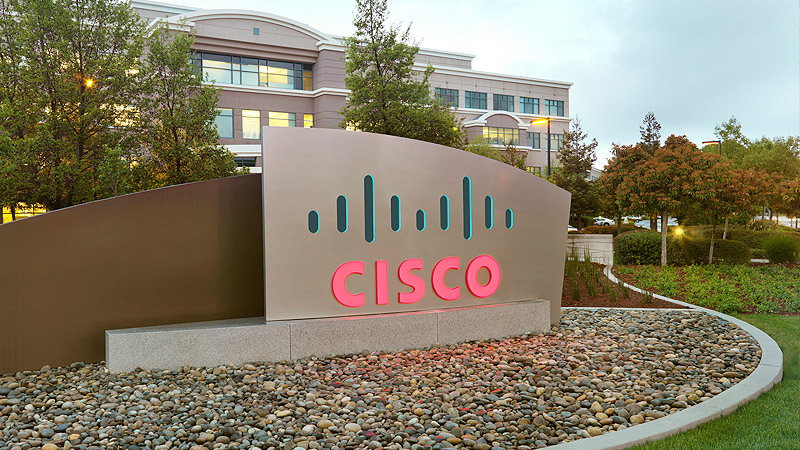SAN JOSE, Calif., June 3, 2008 - Mobile devices represent a major growth opportunity for the retail industry by providing a new purchasing channel for consumers, a Cisco study reveals. The company's third annual e-commerce study indicates that mobile devices are quickly joining physical stores, websites and catalogs as an important retail channel. The rise of social networking and advanced mobile technologies has redefined the online experience and is enabling retailers to capture new sources or revenue by implementing mobile strategies. The e-commerce study was conducted by the Cisco Internet Business Solutions Group (IBSG), the company's global strategic consulting arm that works with Global Fortune 500 and public sector organizations to help transform the way they do business.

"Mobile presents a revenue opportunity for retailers and opens up a new era of multichannel retail," said Dick Cantwell, vice president of IBSG's Retail / CPG Practice. "Multichannel retailing has morphed into a web of shopper touchpoints across stores, catalogs, mobile devices, and the Internet. Retailers must start offering shoppers an 'interconnected shop' if they are to take advantage of the mobile opportunity."
Advanced Capabilities Puts Retailer Sites into Top 10
The Cisco IBSG study assessed 45 retailers from North America and Europe in three categories (Global 500, Web 15 and Innovators) and looked at two aspects of online shopping from the consumer's point of view. The first is "foundational" capabilities, which are nonnegotiable, "must have" characteristics. These include an intuitive graphical user interface, search capabilities and a convenient purchasing process. The second is "emerging" capabilities, which are the more sophisticated aspects, such as social networking and multichannel integration, that add even greater value to the customer's experience.
The top 10 sites not only delivered flawless execution on the foundational capabilities, making shopping exceptionally easy for customers, but they also offered advanced capabilities that are redefining the online experience. While customers always demand foundational excellence, expectations for emerging capabilities have shifted rapidly from last year, catching some retailers off-guard. The study found that the top 10 overall e-commerce sites, from first to tenth, were Amazon.com, Best Buy, Sears, Circuit City, Quelle, Otto, Macy's, FNAC, Bol.com and Argos Home Retail Group.
The opportunity in e-commerce continues to grow. Forrester Research estimates that online sales will reach $204 billion this year and $335 billion by 2012. E-commerce accounts for 6 percent of all retail sales in the United States.
Mobile Advantage
By executing the basics of e-commerce well, retailers can gain the trust, and the repeat business, of customers who want a fast, reliable and hassle-free experience. New technologies and capabilities such as mobile access can help retailers provide a unique, satisfying e-commerce experience. Customers will soon expect to use their mobile devices to find stores, research products, make purchases and manage their accounts. In anticipation of this market opportunity, retailers should evaluate mobile and multichannel strategies that allow customers to access retail product information anytime, from any device. In addition, with the rise of social networking, web-based multimedia, and mobile commerce, retailers can now select from a broad range of technologies to reach customers. Monitoring what innovative companies are doing in retail and in related industries like financial services will help retailers adapt best practices to their own circumstances and strategies.
The Rise of Mobile Commerce
Currently, there are three times as many mobile-phone subscribers (3.3 billion) as Internet users (1.3 billion) worldwide. Cisco expects mobile commerce to follow an adoption pattern similar to that of cell phones. Early retail adopters are already finding ways to factor the mobile phone into multichannel service delivery. For the more basic mobile offering, retailers are using SMS (Short Message Service) to communicate promotions, provide a two-way service for customers' questions, and offer item availability and delivery updates. The Cisco IBSG survey found that:
- 42 percent of retailers provide the ability to view product information on a mobile device through reformatted web pages or specific mobile pages
- 15 percent offer the ability to conduct transactions (make purchases, complete inventory queries, etc.)
- 10 percent are using SMS to provide information or answers to customers' questions
- 6 percent have webpages and a URL specifically designed for mobile use
The Social Networking Influence
The explosive growth of social networking sites like MySpace and Facebook, virtual worlds like Second Life, and multimedia sites like YouTube have transformed customer behavior and expectations for online experiences. While social networking started with the young and tech-savvy, it is increasingly reaching the mainstream as consumers 35 and over are joining social networking sites in droves. For example, Facebook reported 286 percent growth in members aged 35 and over from May 2006 to November 2007. Social networking has grown on a global level, with the number of European log-ons (127 million) surpassing that of the United States (124 million). The Cisco IBSG survey of e-commerce sites found:
- 17 percent provide the capability to connect to communities of interest
- 52 percent provide customer reviews for products
- 50 percent have advanced visualization tools
- 50 percent provide multimedia such as video
- 50 percent offer customer support through multiple channels, such as click-to-chat
The majority of e-commerce innovation over the past year has focused on engaging and interacting with shoppers. Peer-based reviews and interaction are becoming a baseline expectation, and retailers will need to continue to develop advanced visualization and video capabilities (in addition to mobile commerce technologies) to resonate better with shoppers. Retailers need to consider these capabilities now so that they are incorporated into future platforms.
Sidebar - Key Insights for Retailers
- Create and become a trusted destination site for your core shoppers
- Do not miss the opportunity to use social networking to attract and retain the Gen X and boomer age groups
- Develop your mobile strategy now; "Multichannel" retailing is continually being redefined
- Ensure that user security is integrated into your approach when creating your mobile strategy
- Identify and choose the critical new capabilities that your shoppers will really value, and execute them superbly
- Recognize that innovation is an ongoing process and not an annual event



